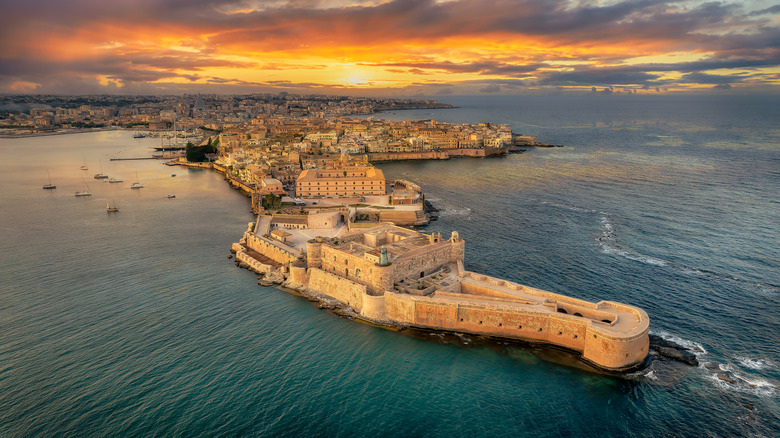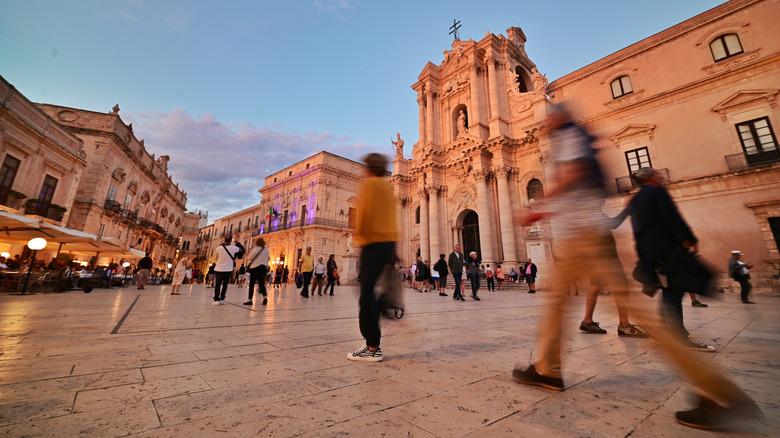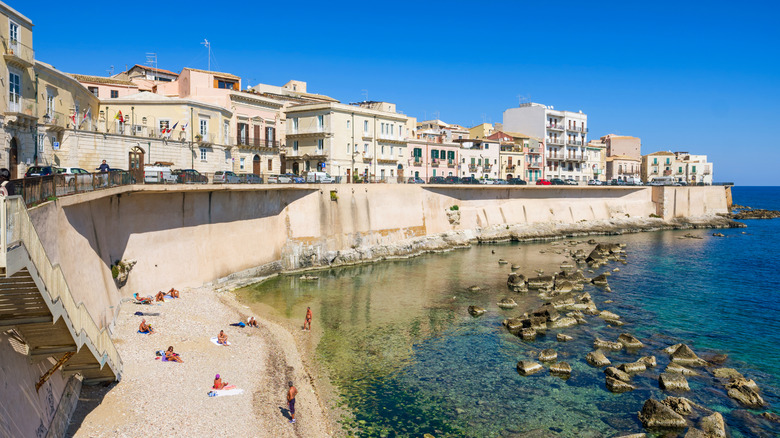Considered by many as one of the most beautiful islands in the world, Capri is a destination most travelers gravitate to when seeking an Italian island escape. Its beauty is undisputed, but its highly regarded reputation nevertheless comes with a caveat. The popular island is full of tourist traps, leaving you with a completely different experience from the carefree vacation you were hoping for. Fortunately, Italy possesses equally beautiful islands that don’t get enough attention, and shifting your sights toward the eastern Sicilian coast reveals Ortigia, a tempting alternative to Capri that has none of its burgeoning crowds but all of its beguiling charms.
Europe’s historic old towns are usually found at the heart of a city, with their oldest buildings preserved within ancient walls. But Ortigia, the ancient historical portion of the Sicilian city of Syracuse, is unique in the sense that it is an island in itself, with two bridges tethering it to Syracuse’s mainland. Dating back 3,000 years, Ortigia encompasses not only its Grecian roots but also its Roman, Byzantine, Arabo-Muslim, and Norman periods, earning it a UNESCO World Heritage Site designation. These influences carved a rich architectural heritage across the island, from temples to a majestic cathedral and a fortress flanking the tip of the island. Connecting them are veins of narrow cobblestone alleyways, which snake along buildings with cute balconies, quiet cul-de-sacs, and a bustling street market.
Life in this pedestrian-friendly island moves at a deliciously unhurried pace — a result, no doubt, of being an easy 20-minute walk from end to end. Paired with sunbathing spots, café-lined piazzas, and gastronomic delights, there are hidden gems to discover in this authentic, low-key Italian island that its more popular counterparts can’t recreate.
Ortigia’s cobblestone streets are a wander through time
In Italian, gironzolare means “aimless wandering” — an activity apt for discovering Ortigia, where fruitful discoveries come at you left and right. Your first encounter on the island will be the Temple of Apollo, or rather what’s left of the sixth-century Doric temples. Walk further south to admire the Fountain of Diana in the café- and boutique-dotted Piazza Archimede. Afterward, drop by the Piazza del Duomo to soak in the seventh-century Syracuse Cathedral; its stunning Baroque façade and architectural features safeguard the various iterations it underwent over the centuries. It was a temple dedicated to Athena around 480 B.C. and a church in the Middle Ages before being used by the Arabs as a mosque until they were overthrown by the Normans. When visiting, be sure to dress modestly as is fitting for a place of worship.
To the east lies the Jewish Quarter (Guidecca), where you can wander around a maze of streets that are quieter and even narrower than those of the rest of the island. There are also a slew of artisanal boutiques, from puppet makers to souvenir shops studded with Sicilian trinkets to bring back home. Your meanderings will eventually lead you to the 13th-century Maniace Castle, which was turned into a fortress during the Napoleonic Wars.
After you’ve worked up an appetite, be sure to check out the Ortigia Market, preferably in the morning, when local vendors spread out their fresh seafood catch alongside colorful produce. Otherwise, the island brims with places to eat, from hole-in-the-wall stalls to higher-end bistros. When in doubt, there’s always a place to have a coffee, a granita, or a pistachio-flavoured pastry to hold you until the next meal.




